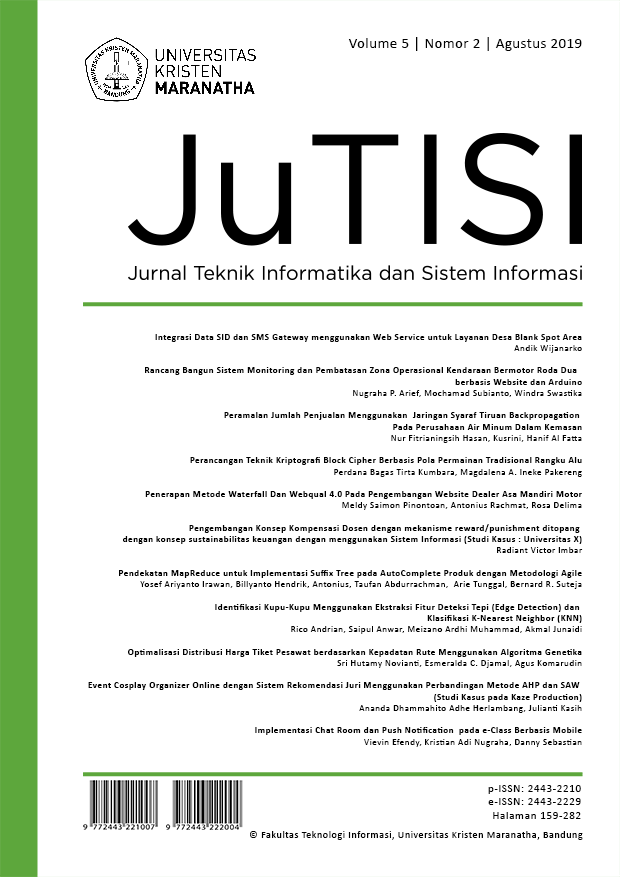Identifikasi Kupu-Kupu Menggunakan Ekstraksi Fitur Deteksi Tepi (Edge Detection) dan Klasifikasi K-Nearest Neighbor (KNN)
Main Article Content
Abstract
Lampung has the only breeding of in situ butterflies engineered in Indonesia namely Gita Persada Butterfly Park, which has approximately 211 butterfly species. Butterflies can be classified according to patterns found on the wings of a butterfly. The weakness of the human eye in distinguishing patterns on butterflies is a foundation in building butterfly identification based on pattern recognition. This study uses 6 species of butterflies: Papilio memnon, Troides helena, Papilio nephelus, Cethosia penthesilea, Papilio peranthus, and Pachliopta aristolochiae. The butterfly dataset used is 600 images. The butterfly image used is in the form of the upper wing side. The pre-processing stage uses the method of scaling, segmentation, and grayscale. The feature extraction stage uses the canny edge detection method by applying smoothing, edge strength, edge direction, non maximum suppression, and hyterisis thresholding. The classification phase uses the K-Nearest Neighbor (KNN) method with values k = 1, 3, 5, 7, 9, 11, 13, 15, 17, 19, 21 and 23 obtained under the Rule of Thumb. The identification of butterfly require a classification time of 8 seconds. The highest accuracy is obtained from testing with a value of k = 5 by 80%.
Downloads
Download data is not yet available.
Article Details
How to Cite
[1]
R. Andrian, S. Anwar, M. A. Muhammad, and A. Junaidi, “Identifikasi Kupu-Kupu Menggunakan Ekstraksi Fitur Deteksi Tepi (Edge Detection) dan Klasifikasi K-Nearest Neighbor (KNN)”, JuTISI, vol. 5, no. 2, Sep. 2019.
Section
Articles
This is an open-access article distributed under the terms of the Creative Commons Attribution-NonCommercial 4.0 International License (https://creativecommons.org/licenses/by-nc/4.0/) which permits unrestricted non-commercial used, distribution and reproduction in any medium.
This work is licensed under a Creative Commons Attribution-NonCommercial 4.0 International License.

